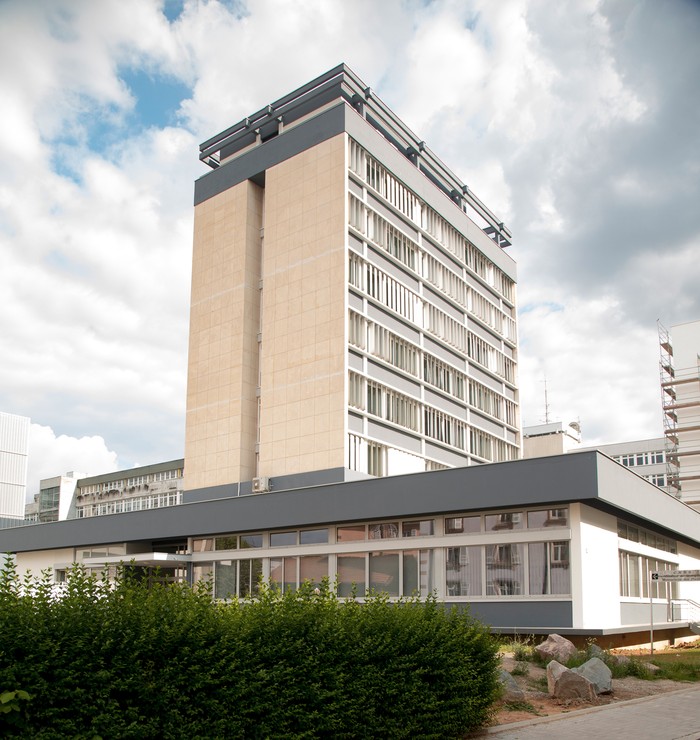Institut de recherche mathématique avancée
L'institut
À la une
Agenda
-
Lundi 12 janvier 2026 - 14h00 Séminaire Géométrie et applications
-
Sergi Burniol-Clotet :
À venir
- Lieu : Salle de séminaires IRMA
-
Résumé : TBA
-
Mardi 13 janvier 2026 - 14h00 Séminaire Equations aux dérivées partielles
-
Corentin Houpert :
Physics-Informed Autoencoders for filling missing values in CO2 measurements
- Lieu : Salle de conférences IRMA
-
Résumé : Missing values in measurements for carbon dioxide emissions on drained peatlands remains an open challenge for training forecasting techniques to achieve net zero. At the field scale, existing methods struggle to model CO_2 emissions to fill gaps, especially in nighttime measurements. We propose robust Physics-Informed Autoencoders (PIAEs), which combine the generative capabilities of Autoencoders with the reliability of physical models of Net Ecosystem Exchange (NEE) that quantify CO_2 exchanges between the atmosphere and major carbon pools. Our method integrates equations describing the physical processes and associated uncertainties to fill gaps in NEE measurements from eddy covariance (EC) flux towers. In the PIAE, various sensor measurements are encoded into the latent space, and a set of decoders is then used to approximate the ecosystem parameters and the optimal NEE forecast, directed by dynamics described by a stochastic differential equation. These decoders utilize nighttime and daytime NEE models that describe carbon transfer as a Wiener process. Finally, we use a two-phased training routine with two loss functions describing each phase: Mean Squared Error (MSE) and Maximum Mean Discrepancy (MMD) between the measurements and the reconstructed samples. PIAE outperforms the current state-of-the-art Random Forest Robust on the prediction of nighttime NEE measurements on various distribution-based and data-fitting metrics. We present significant improvement in capturing temporal trends in the NEE at daily, weekly, monthly and quarterly scales.
-
Mardi 13 janvier 2026 - 14h00 Séminaire ART
-
Clément Dupont :
L'enlacement des arrangements de droites
- Lieu : Salle de séminaires IRMA
-
Résumé : Résumé : Les arrangements de droites dans le plan projectif complexe sont des objets fascinants qui interrogent les liens entre topologie, géométrie, et combinatoire. Dans cet exposé je revisiterai un invariant topologique des arrangements de droites, initialement défini par Artal, Florens, et Guerville-Ballé par analogie avec la théorie des nœuds, qui permet parfois de distinguer des paires de Zariski (deux arrangements de droites avec la même combinatoire mais des topologies différentes). On verra que cet invariant est de nature homologique, et on l'étudiera grâce aux outils, classiques et moins classiques, de l'homologie des variétés algébriques. Il s'agit d'un travail en commun avec Benoît Guerville-Ballé.
-
Du 14 au 16 janvier 2026 conférence
-
Mini rencontre sur les théories conformes et applications
- Lieu : Salle de conférences IRMA
-
Jeudi 15 janvier 2026 - 14h00 Séminaire Arithmétique et géométrie algébrique
-
Livia Grammatica :
Tate-linear formal varieties
- Lieu : Salle de séminaires IRMA
-
Résumé : We work over a closed field of positive characteristic. A classic result of Serre-Tate says that the deformation space of an ordinary abelian variety has the structure of a formal torus, and one can consider the closed subvarieties which are given by formal subtori. Tate-linear formal varieties play the role of formal subtori in the deformation space of abelian varieties of arbitrary Newton polygon. Recent work of Chai-Oort established an important link between Tate-linear subvarieties and the Hecke orbit conjecture for \mathcal{A}_g, which then led to a full solution for Shimura varieties of Hodge type by D'Addezio and van Hoften. We will explain the role of Tate-linear varieties in the Hecke orbit conjecture, their conjectural link with special subvarieties of \mathcal{A}_g, and show how p-adic monodromy techniques can help shed light on their structure.
-
Jeudi 15 janvier 2026 - 16h30 Séminaire Doctorants
-
Kenza Memlouk :
Towards the motivic Galois group for a double zeta value
- Lieu : Salle de conférences IRMA
-
Résumé : The goal of this talk is to discuss the motivic Galois group of a double zeta value. To do so, I will recall some elements of Galois theory. Then, I will introduce periods and more precisely multiple zeta values. We will see that the Galois philosophy can be used to study periods. At the end, I will express the motivic Galois group of a single zeta value and I will compare it to the case of a double zeta value.

